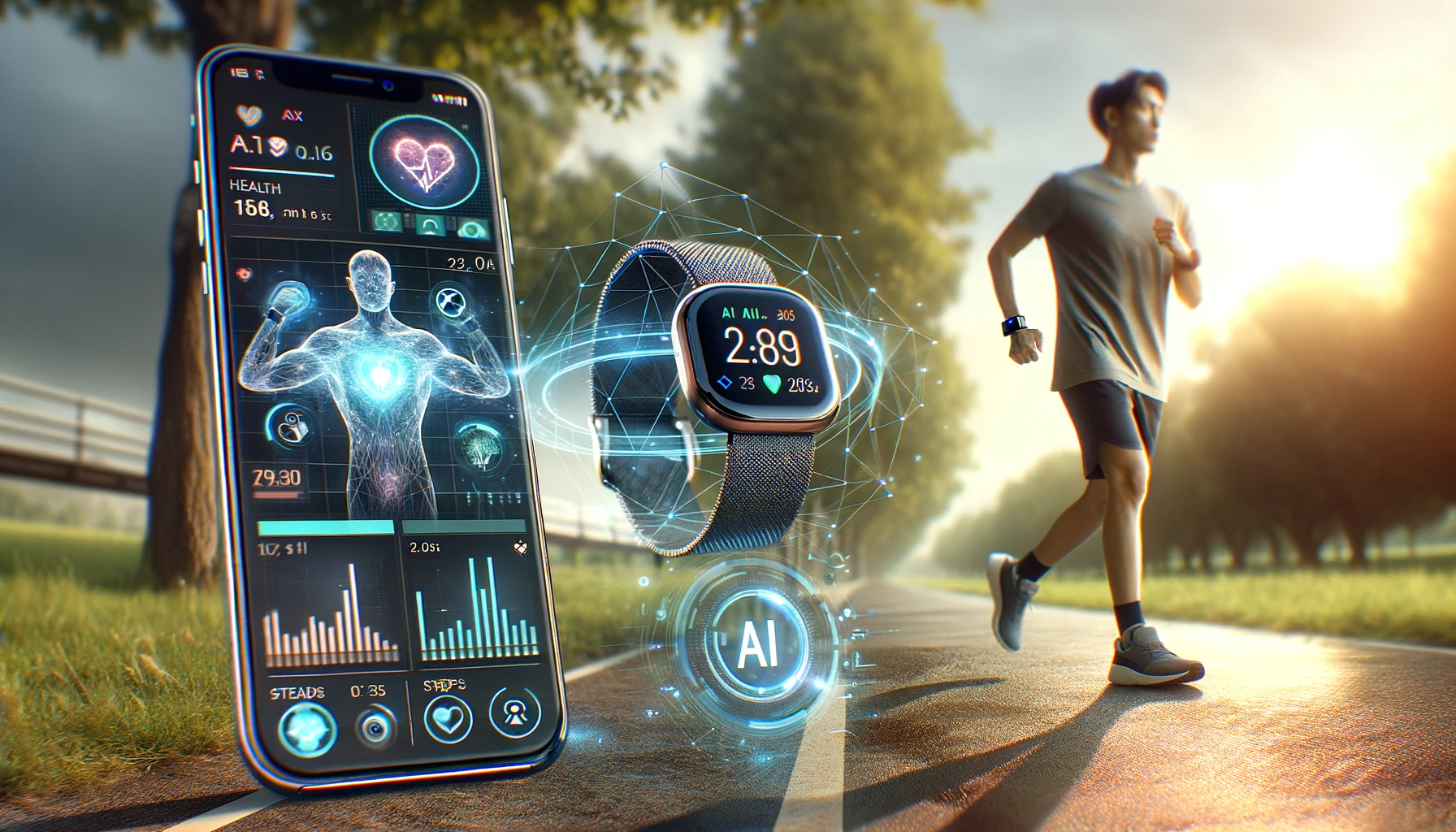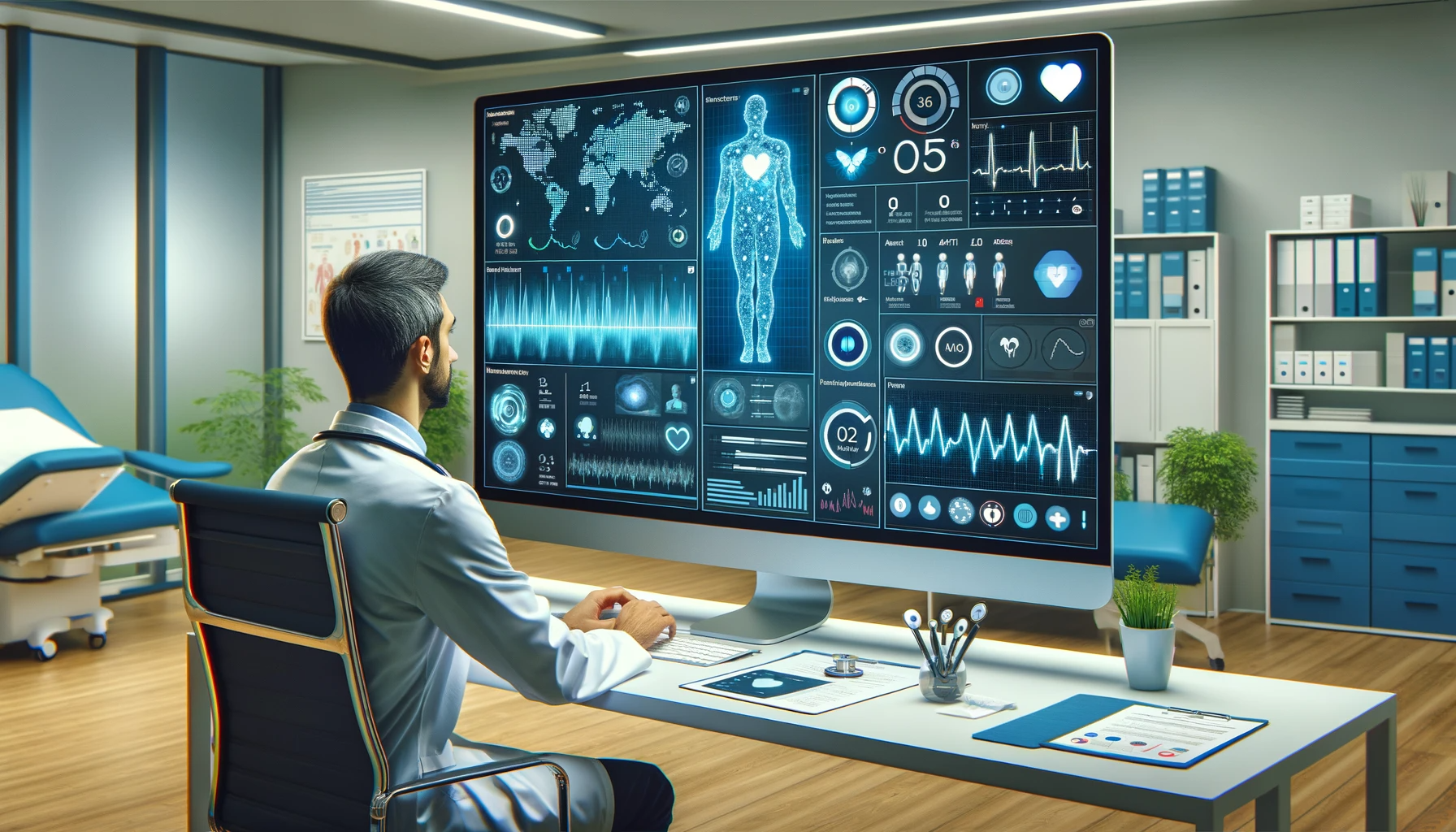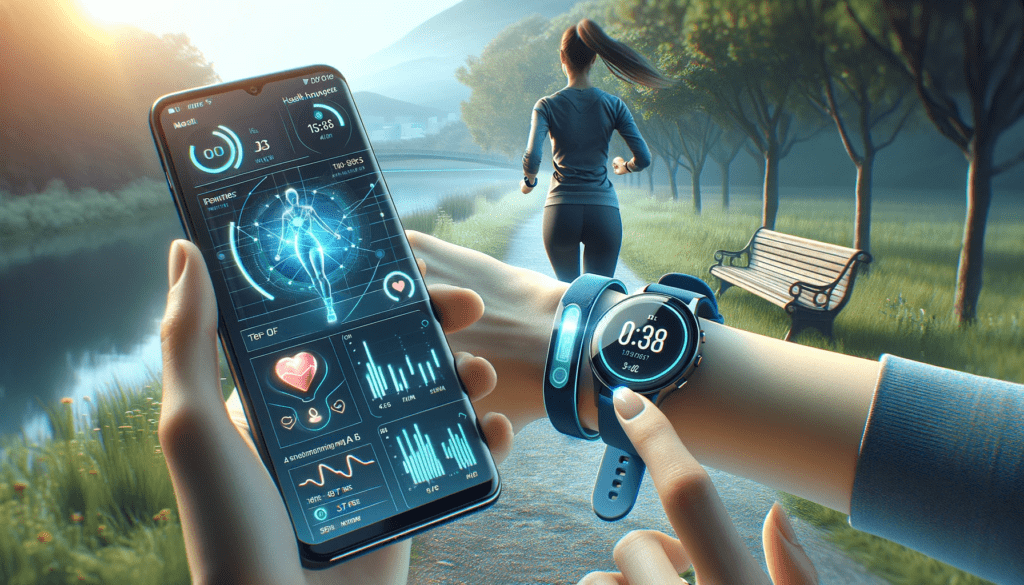The intersection of technology and healthcare has given rise to a remarkable trend in recent years: the proliferation of smart wearable health devices. These devices, ranging from fitness trackers to advanced health monitors, have become increasingly prevalent in our daily lives, promising to revolutionize the way we monitor and manage our health. While the concept of wearable health technology is not entirely new, it is the infusion of Artificial Intelligence (AI) that has catapulted these devices into a new era of functionality and impact.
AI, with its immense data-processing capabilities and ability to learn and adapt, has emerged as a driving force behind the evolution of wearable health devices. It is reshaping the landscape of healthcare by enhancing the capabilities of these devices in ways previously unimaginable. In this article, we delve into the pivotal role played by AI in the development of smart wearable health devices, exploring how it elevates their functionality and, in turn, their potential to monitor and improve our health.
The Evolution of Smart Wearable Health Devices
In the realm of healthcare technology, the story of smart wearable health devices is one of remarkable evolution. These devices, which now seamlessly blend into our daily lives, have come a long way from their humble beginnings as basic step counters and heart rate monitors. To fully appreciate the impact of Artificial Intelligence (AI) on these devices, we must first journey back to their origins and understand the challenges that early wearable health devices faced.

Historical Context: Early Wearable Devices and Their Limitations
The concept of wearable health technology dates back to the early 20th century, with rudimentary devices like pedometers designed to count steps and estimate distance traveled. These early gadgets were a far cry from the sleek, feature-rich wearables we have today. They were often cumbersome, lacked connectivity, and had limited functionality. The data they provided was rudimentary at best, offering little more than a basic step count or heart rate reading.
One of the key limitations of these early devices was their inability to offer comprehensive health insights. While they could provide some basic data, they fell short when it came to delivering a holistic view of one’s health. For instance, they could count steps but could not analyze sleep patterns or monitor vital signs beyond heart rate. These limitations hindered their utility in addressing more complex health issues.
The Rise of Fitness Trackers and Health Monitoring Wearables
The turning point in the evolution of wearable health devices came with the emergence of fitness trackers. These devices, introduced in the early 2010s, marked a significant shift in the landscape. They went beyond basic step counting to include features like heart rate monitoring, calorie tracking, and activity level assessment.
Fitness trackers gained popularity rapidly, driven by an increasing consumer interest in health and wellness. People wanted tools that could help them monitor their fitness goals and make more informed lifestyle choices. These early devices started to pave the way for a new era of wearable health technology, offering more comprehensive health insights.
The Need for More Advanced and Intelligent Solutions
While fitness trackers represented a significant step forward, there was still a growing need for more advanced and intelligent solutions in the wearable health device space. Health is a multifaceted aspect of our lives, and monitoring it effectively requires a more nuanced approach.
This is where AI enters the picture. Artificial Intelligence has emerged as a transformative force in healthcare and wearable technology. Its ability to process vast amounts of data, learn from patterns, and provide real-time insights has positioned AI as the catalyst for the next phase of wearable health device evolution. In the following sections, we will explore how AI enhances the capabilities of smart wearable health devices, enabling them to monitor and improve our health in ways previously unimaginable.
Key Features of Smart Wearable Health Devices
In this section, we will delve into the fundamental features of smart wearable health devices, the limitations they face, and how AI is poised to address these shortcomings.
Discussion of Common Features: Heart Rate Monitoring, Activity Tracking, Sleep Analysis, etc.
Smart wearable health devices are equipped with a range of features designed to provide valuable health insights. These typically include heart rate monitoring, activity tracking, sleep analysis, and more.
Heart rate monitoring, for example, allows users to keep tabs on their cardiovascular health in real time. Activity tracking helps individuals measure their daily physical exertion, encouraging a more active lifestyle. Sleep analysis provides a deeper understanding of sleep patterns, potentially identifying sleep disorders.
Limitations of Traditional Features in Providing Comprehensive Health Insights
While these common features represent a significant advancement in health monitoring, they have their limitations. Heart rate monitoring, while valuable, may not detect subtle irregularities. Activity tracking often relies on basic step counts, overlooking the quality of physical activity. Sleep analysis can provide data but may struggle to translate it into actionable insights.
Traditional features alone often fall short in providing a holistic view of one’s health, which is where AI-driven enhancements come into play.
2.3 Introduction to AI-Driven Enhancements
Artificial Intelligence has the power to revolutionize these features. AI can process and analyze data from these sensors in real-time, offering personalized insights and actionable recommendations. Machine learning algorithms, for instance, can detect patterns and anomalies in heart rate data, enabling early detection of irregularities.
AI-driven enhancements not only make these features more intelligent but also provide a deeper level of personalization. The amalgamation of AI with these core features transforms wearable health devices from passive data collectors to proactive health partners.

AI-Powered Data Processing
In this section, we’ll explore the central role AI plays in collecting, processing, and making sense of the vast amount of health data generated by wearable devices.
Explanation of AI’s Role in Data Collection and Processing
AI, through its data collection and processing capabilities, acts as the backbone of smart wearable health devices. These devices continuously collect data from various sensors and sources, such as accelerometers, gyroscopes, and biometric sensors. AI processes this data to create meaningful insights.
AI’s role in data collection isn’t limited to the device itself; it extends to cloud-based platforms where data is aggregated and analyzed. This allows for seamless tracking of health metrics over time.
Machine Learning Algorithms and Their Ability to Make Sense of Large Datasets
Machine learning algorithms, a subset of AI, are instrumental in making sense of the vast datasets generated by wearable health devices. These algorithms can identify trends, anomalies, and correlations that might not be evident to the human eye.
For example, they can detect subtle changes in heart rate patterns that may indicate early signs of arrhythmia. They can also learn a user’s activity patterns and provide personalized recommendations for optimizing physical activity.
Real-Time Data Analysis for Immediate Feedback
One of the most significant advantages of AI-powered data processing is the ability to provide real-time feedback. Wearable health devices equipped with AI can analyze data on the spot and offer immediate insights to the user.
For instance, if a device detects a sudden spike in heart rate during physical activity, it can notify the user to take a break or seek medical attention. This real-time analysis has the potential to be life-saving in critical situations and can significantly enhance the user’s overall health management.
Advanced Health Monitoring with AI
In this section, we will explore how AI extends the capabilities of smart wearable health devices beyond basic monitoring to detect vital signs, anomalies, and early signs of health conditions.
Detection of Vital Signs Beyond Heart Rate: Blood Pressure, ECG, Temperature, etc.
While heart rate monitoring is a valuable feature, AI enables wearables to delve deeper into health monitoring. Devices can now measure blood pressure, monitor electrocardiogram (ECG) signals, and track body temperature. AI algorithms can interpret these vital signs to provide a more comprehensive view of an individual’s health.
This expanded capability allows for early detection of conditions like hypertension, arrhythmias, and fever, enabling timely interventions and better health outcomes.
AI’s Role in Identifying Anomalies and Irregularities
AI’s ability to detect anomalies is a game-changer in health monitoring. It can recognize irregular heart rhythms, unusual blood pressure fluctuations, or abnormal body temperature patterns. When an anomaly is detected, the device can alert the user and, in some cases, healthcare professionals.
This proactive approach to health monitoring has the potential to save lives by identifying health issues at their earliest stages, when they are most treatable.
Case Studies Showcasing AI-Driven Early Disease Detection
To illustrate the power of AI in early disease detection, we can delve into real-world case studies. For example, wearable devices equipped with AI algorithms have been instrumental in identifying atrial fibrillation (AFib) in individuals who were otherwise asymptomatic. Such cases highlight the critical role of AI in preventive healthcare and early intervention.
These advanced capabilities are transforming smart wearable health devices into proactive health management tools, enabling users to take control of their well-being and potentially preventing serious health complications.
Personalized Health Insights
This section explores how AI tailors health recommendations and predictions based on individual health data, improving adherence to health goals.
How AI Tailors Recommendations Based on Individual Health Data
AI excels in personalization. It takes into account an individual’s health history, lifestyle, and preferences to offer tailored recommendations. For example, if a wearable device recognizes that a user consistently falls short of their daily activity goal, it can suggest specific activities or adjustments to help them achieve their target.
The Role of AI in Predicting Health Trends and Risk Factors
AI’s data analysis capabilities extend to predicting health trends and identifying risk factors. By continuously monitoring health data, wearable devices can detect patterns that may signal impending health issues. For instance, it can predict an increased risk of developing diabetes based on long-term trends in blood glucose levels.
These predictive insights empower individuals to make informed decisions about their health and take preventive measures.
Improved Adherence to Health Goals Through Personalized Feedback
Personalization not only enhances the relevance of recommendations but also motivates users to adhere to their health goals. Knowing that their wearable device understands their unique needs and provides tailored guidance can boost user engagement and commitment to a healthier lifestyle.
By incorporating AI-driven personalization, smart wearable health devices become more than just data collectors; they become trusted health companions that support users in their journey towards better health.
These sections delve into the core features of smart wearable health devices, AI’s role in data processing, advanced health monitoring, and personalized health insights. In the following sections, we will explore the ethical and privacy considerations of AI-driven wearables, as well as the challenges and future prospects of this dynamic field.
Conclusion
The fusion of Artificial Intelligence (AI) with smart wearable health devices has ushered in a new era of healthcare, one where individuals have the power to monitor and improve their well-being with unprecedented precision and personalization. As we conclude our exploration of AI’s influence on these remarkable devices, it is evident that the impact is nothing short of transformative.
The journey began with a look back at the historical evolution of wearable health devices. From basic pedometers to the emergence of fitness trackers, we witnessed the gradual shift towards comprehensive health monitoring. However, the limitations of these early devices were clear, and they left much to be desired in terms of delivering actionable insights for users.
The need for more advanced and intelligent solutions became apparent, and this need propelled the rise of AI in the wearable health device industry. As we have seen, AI has not merely complemented existing features; it has elevated them to a level of sophistication that was once unimaginable. AI-driven enhancements have breathed new life into heart rate monitoring, activity tracking, sleep analysis, and more, making them more than just data points but valuable sources of personalized health insights.
AI’s prowess in data processing and analysis has unlocked real-time feedback capabilities, ensuring that users receive immediate guidance and alerts when necessary. This is particularly crucial in healthcare, where timely interventions can be life-saving.
Moreover, AI has expanded the horizons of health monitoring by enabling the detection of vital signs beyond heart rate. Devices can now measure blood pressure, ECG signals, and body temperature with precision. AI algorithms excel at identifying anomalies and irregularities, ushering in an era of early disease detection and proactive healthcare management.
Perhaps one of the most significant contributions of AI to wearable health devices is its ability to offer personalized health insights. By tailoring recommendations and predictions based on individual health data, AI fosters improved adherence to health goals and empowers individuals to take charge of their well-being. Wearable devices, equipped with AI, have transitioned from being passive data collectors to becoming trusted health companions.
However, as we embrace this exciting future, we must also navigate a landscape of ethical and privacy considerations. The responsible collection and use of health data are paramount. Striking the right balance between technological advancement and safeguarding personal information remains a challenge that must be addressed.

In conclusion, the marriage of AI and smart wearable health devices has ushered in a healthcare revolution. These devices are no longer mere gadgets; they are powerful tools for health monitoring, early disease detection, and personalized health enhancement. As AI continues to evolve, the future holds promises of even more advanced features, seamless integration with healthcare systems, and further improvements in our ability to monitor and improve our health.
The synergy between AI and smart wearables marks an exciting chapter in the history of healthcare, where individuals are empowered to take control of their health and well-being like never before. It is a testament to the potential of technology to transform lives and shape the future of healthcare.
